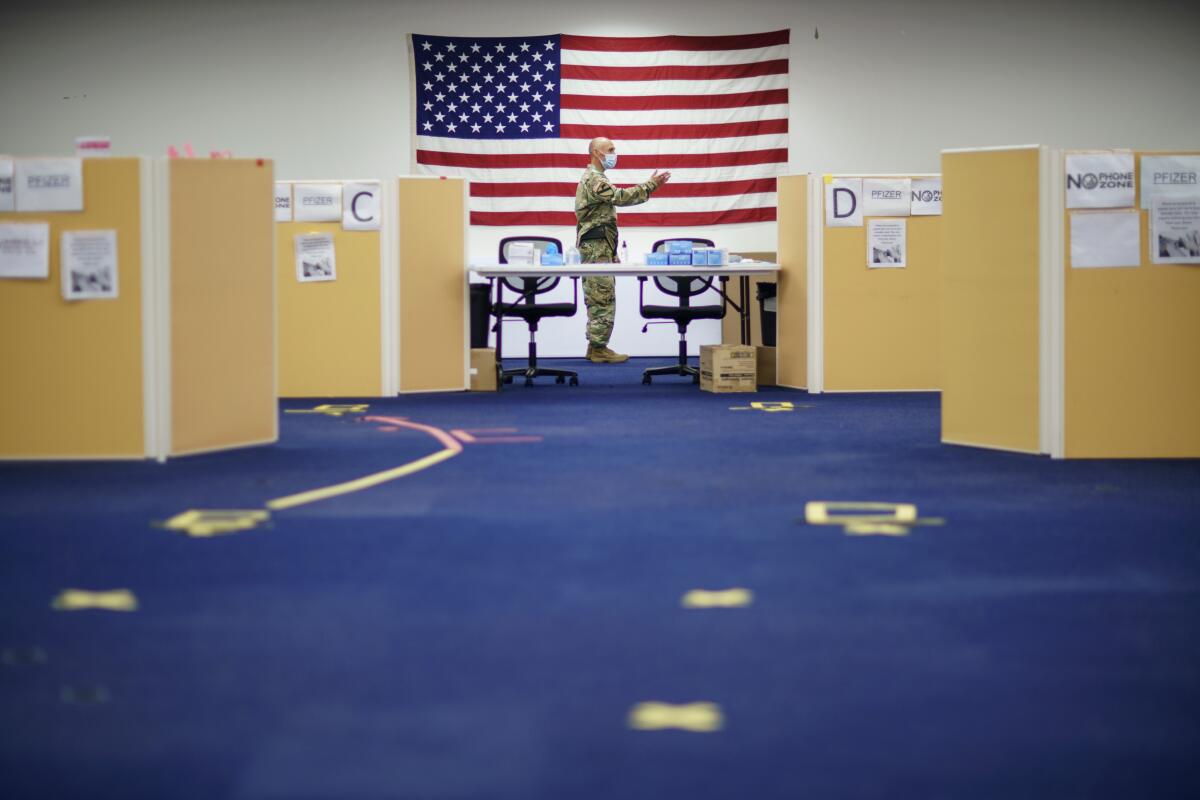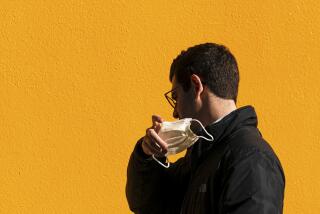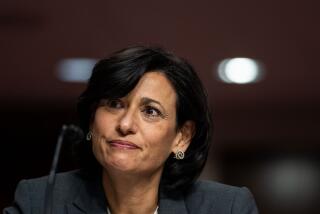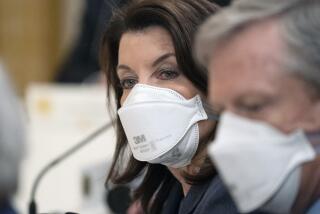National Guard helping coronavirus-sapped states, hospitals

- Share via
More U.S. states desperate to defend against COVID-19 are calling on the National Guard and other military personnel to assist coronavirus-weary medical staffs at hospitals and other care centers.
People who became sick after refusing to get vaccinated are overwhelming hospitals in certain states, especially in the Northeast and the Upper Midwest. New York, meanwhile, announced a statewide indoor mask order, effective Monday and lasting five weeks through the holiday season.
“We’re entering a time of uncertainty, and we could either plateau here or our cases could get out of control,” Gov. Kathy Hochul warned Friday.
In Michigan, health director Elizabeth Hertel was equally blunt: “I want to be absolutely clear: You are risking serious illness, hospitalization and even death” without a vaccination.
By demonstrating that rigorous enforcement of school vaccine mandates would work in the 1970s, L.A. County had a powerful influence on the country.
The seven-day rolling average for daily new cases in the U.S. rose over the last two weeks to 117,677 by Thursday, compared with 84,756 on Nov. 25, Thanksgiving Day, according to Johns Hopkins University. The number of people hospitalized with COVID-19 has soared to about 54,000 on average, according to the Centers for Disease Control and Prevention.
Meanwhile, the country is approaching a new milestone of 800,000 COVID-19 deaths. More than 200 million Americans, or about 60% of the population, are now fully vaccinated.
In Maine, which hit a pandemic high this week with nearly 400 COVID-19 patients in hospitals, as many as 75 members of the National Guard were being summoned to try to keep people out of critical care with monoclonal antibodies and to perform other non-clinical tasks.
Maine has one of the highest COVID-19 vaccination rates in the country — 73% — but that rate lags in many of the state’s rural pockets.
The New York National Guard said it had deployed 120 Army medics and Air Force medical technicians to 12 nursing homes and long-term care facilities to relieve fatigued staff.
Dr. Paolo Marciano, chief medical officer at Beaumont Hospital in Dearborn, Mich., said it was a “tremendous lifeline” to get assistance from the Defense Department, which has more than 60 nurses, doctors and respiratory therapists assigned to the state.
“It allowed us to be able to care for the COVID patients and at the same time still maintain the level of care that cancer patients require or people with chronic illnesses,” Marciano said. “Where we are today is really just keeping our heads above water.”
New York’s mask order covers all indoor public places unless a business or venue has a vaccine requirement. The state reported more than 68,000 positive tests for the virus in a seven-day period that ended Wednesday, the most for any seven-day stretch since February.
New York City and several upstate New York counties already have mask mandates. Critics, however, said the governor’s announcement was another burden for businesses.
“Government overreach at its worst,” said Republican Assemblyman Mike Lawler.
Michigan is sending more ventilators to hospitals and asking for even more from the national stockpile. Infection rates and hospitalizations are at record levels, 21 months into the pandemic. The first case of the Omicron variant was confirmed Thursday in the Grand Rapids area.
The largest hospital system in Indiana enlisted National Guard for support this week at a time when the number of COVID-19 patients in the state has more than doubled in the past month. The state’s COVID-19 hospitalizations are now higher than Indiana’s summer surge that peaked in September and are approaching the pandemic peak reached in late 2020.
More to Read
Sign up for Essential California
The most important California stories and recommendations in your inbox every morning.
You may occasionally receive promotional content from the Los Angeles Times.











